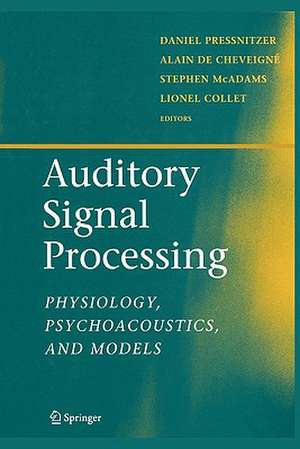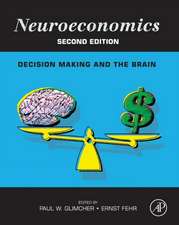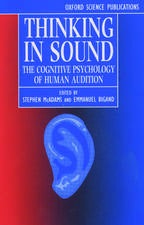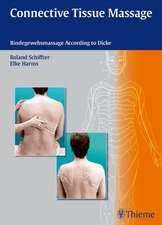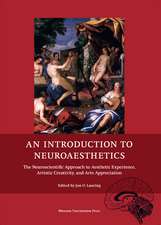Auditory Signal Processing: Physiology, Psychoacoustics, and Models
Editat de Daniel Pressnitzer, Alain de Cheveigne, Stephen McAdams, Lionel Colleten Limba Engleză Paperback – 5 oct 2010
| Toate formatele și edițiile | Preț | Express |
|---|---|---|
| Paperback (1) | 1228.29 lei 6-8 săpt. | |
| Springer – 5 oct 2010 | 1228.29 lei 6-8 săpt. | |
| Hardback (1) | 1234.94 lei 6-8 săpt. | |
| Springer – 29 noi 2004 | 1234.94 lei 6-8 săpt. |
Preț: 1228.29 lei
Preț vechi: 1497.92 lei
-18% Nou
Puncte Express: 1842
Preț estimativ în valută:
235.03€ • 256.10$ • 198.05£
235.03€ • 256.10$ • 198.05£
Carte tipărită la comandă
Livrare economică 23 aprilie-07 mai
Preluare comenzi: 021 569.72.76
Specificații
ISBN-13: 9781441919533
ISBN-10: 1441919538
Pagini: 540
Ilustrații: XIV, 524 p.
Dimensiuni: 155 x 235 x 28 mm
Greutate: 0.75 kg
Ediția:Softcover reprint of hardcover 1st ed. 2005
Editura: Springer
Colecția Springer
Locul publicării:New York, NY, United States
ISBN-10: 1441919538
Pagini: 540
Ilustrații: XIV, 524 p.
Dimensiuni: 155 x 235 x 28 mm
Greutate: 0.75 kg
Ediția:Softcover reprint of hardcover 1st ed. 2005
Editura: Springer
Colecția Springer
Locul publicării:New York, NY, United States
Public țintă
ResearchDescriere
This book contains the papers that were presented at the XIIIth International Symposium on Hearing (ISH), which was held in Dourdan, France, between August 24 and 29, 2003. From its first edition in 1969, the Symposium has had a distinguished tradition of bringing together auditory psychologists and physiologists. Hearing science now also includes computational modeling and brain imaging, and this is reflected in the papers collected. The rich interactions between participants during the meeting were yet another indication of the appositeness of the original idea to confront approaches around shared scientific issues. A total of 62 solicited papers are included, organized into 12 broad thematic areas ranging from cochlear signal processing to plasticity and perceptual learning. The themes follow the sessions and the chronological order of the paper presentations during the symposium. A notable feature of the ISH books is the transcription of the discussions between participants. A draft version of the book is circulated before the meeting, and all participants are invited to make written comments, before or during the presentations. This particularity is perhaps what makes the ISH book series so valuable as a truthful picture of the evolution of issues in hearing science. We tried to uphold this tradition, which was all the easier because of the excellent scientific content of the discussions.
Cuprins
Cochlear signal processing.- Nonlinearities at the apex of the cochlea: Implications for auditory perception.- Reconstructing the traveling wave from auditory nerve responses.- A computational algorithm for computing cochlear frequency selectivity: Further studies.- Comparison of the compressive-gammachirp and double-roex auditory filters.- Reaction-time data support the existence of Softness Imperception in cochlear hearing loss.- Normal and impaired level encoding: Effects of noise-induced hearing loss on auditory-nerve responses.- Estimates of Cochlear Compression from Measurements of Loudness Growth.- Additivity of masking and auditory compression.- Psychophysical response growth under suppression.- Brainstem signal processing.- The function(s) of the medial olivocochlear efferent system in hearing.- A computational model of cochlear nucleus neurons.- Study on improving regularity of neural phase locking in single neurons of AVCN via a computational model.- Fibers in the trapezoid body show enhanced synchronization to broadband noise when compared to auditory nerve fibers.- Pitch.- Representations of the pitch of complex tones in the auditory nerve.- Coding of pitch and amplitude modulation in the auditory brainstem: One common mechanism?.- Pitch perception of complex tones within and across ears and frequency regions.- Internal noise and memory for pitch.- Time constants in temporal pitch extraction: A comparison of psychophysical and neuromagnetic data.- Auditory processing at the lower limit of pitch studied by magnetoencephalography.- Frequency modulation.- Auditory maps in the midbrain: The inferior colliculus.- Representation of frequency modulation in the primary auditory cortex of New World monkeys.- Frequency change velocity and acceleration detector: A bird or a red herring?.- Representations of the pitch of complex tones in the auditory nerve.- Streaming.- The role of spectral change detectors in sequential grouping of tones.- Performance measures of auditory organization.- Auditory streaming without spectral cues in hearing-impaired subjects.- Amplitude modulation.- The role of temporal structure in envelope processing.- Detecting changes in amplitude-modulation frequency: A test of the concept of excitation pattern in the temporal-envelope domain.- Modeling the role of duration in intensity increment detection.- Minimum integration times for processing of amplitude modulation.- Responses to complex sounds.- Neural mechanisms for analyzing temporal patterns in echolocating bats.- Time-critical frequency integration of complex communication sounds in the auditory cortex of the mouse.- Transformation of stimulus representations in the ascending auditory system.- AM and FM coherence sensitivity in the auditory cortex as a potential neural mechanism for sound segregation.- Speech.- Auditory perception with slowly-varying amplitude and frequency modulations.- The role of auditory-vocal interaction in hearing.- From sound to meaning: Hierarchical processing in speech comprehension.- Effects of differences in the accent and gender of competing voices on speech segregation.- The Articulation Index is a Shannon channel capacity.- Comodulation masking release.- Comodulation masking release and the role of wideband inhibition in the cochlear nucleus.- The relevance of rate and time cues for CMR in starling auditory forebrain neurons.- Effects of concurrent and sequential streaming in comodulation masking release.- Binaural hearing.- Effects of contralateral sound stimulation on forward masking in the guinea pig.- Inhibition in models of coincidence detection.- What can auditory evoked potentials tell us about binaural processing in humans?.- Sensitivity to changes in interaural time difference and interaural correlation in the inferior colliculus.- Processing of interaural temporal disparities with both “transposed” and conventional stimuli.- Sound localization in the frontal horizontal plane by post-lingually deafened adults fitted with bilateral cochlear implants.- Discrimination of different temporal envelope structures of diotic and dichotic target signals within diotic wide-band noise.- A cat’s cocktail party: Psychophysical, neurophysiological, and computational studies of spatial release from masking.- Localization of noise in a reverberant environment.- Listening in real-room reverberation: Effects of extrinsic context.- Psychophysical and physiological studies of the precedence effect and echo threshold in the behaving cat.- Some similarities between the temporal resolution and the temporal integration of interaural time differences.- Binaural “sluggishness” as a function of stimulus bandwidth.- Temporal coding.- Auditory thresholds re-visited.- Discrimination of temporal fine structure by birds and mammals.- Dependence of binaural and cochlear “best delays” on characteristic frequency.- The enigma of cortical responses: Slow yet precise.- Plasticity.- Learning-induced sensory plasticity: Rate code, temporal code, or both?.- Synaptic dynamics and intensity coding in the cochlear nucleus.- Learning and generalization on five basic auditory discrimination tasks as assessed by threshold changes.
Textul de pe ultima copertă
The result of extensive collaboration among leaders of the worldwide auditory research community, Auditory Signal Processing: Physiology, Psychoacoustics, and Models is a record of the papers presented at the XIIIth International Symposium on Hearing (ISH) Dourdan, France, August 24 - 29, 2003. The volume includes a total of 62 invited papers, organized into 12 broad thematic areas: cochlear signal processing; brainstem signal processing; pitch; frequency modulation; streaming; amplitude modulation; responses to complex sounds; speech; comodulation masking release; binaural hearing; temporal coding; and plasticity.
Caracteristici
The result of extensive collaboration among leaders of the worldwide auditory research community, this book contains a total of 62 solicited papers presented at the XIIIth International Symposium on Hearing (ISH) Dourdan, France, August 24-29, 2003
Includes supplementary material: sn.pub/extras
Includes supplementary material: sn.pub/extras
